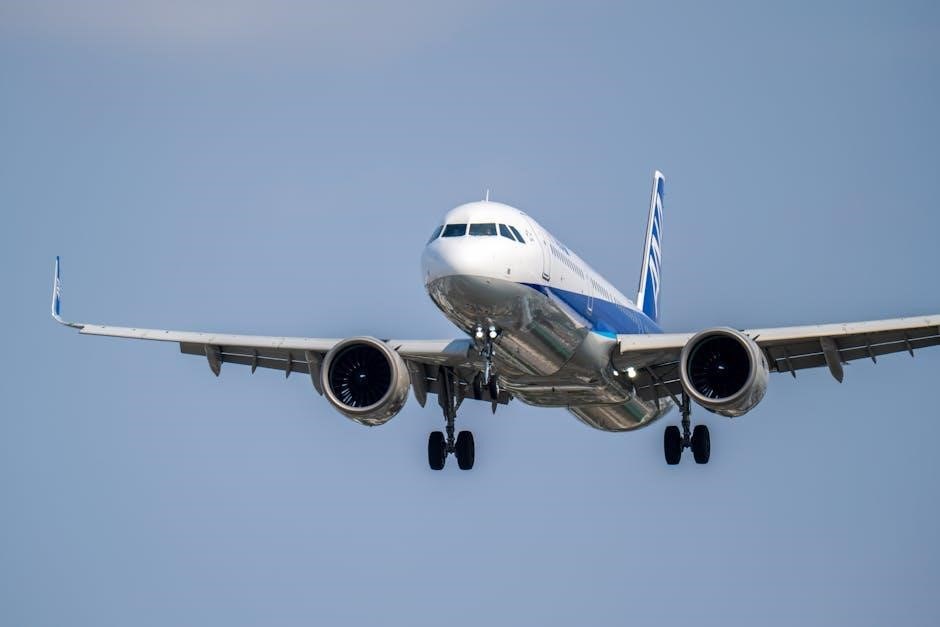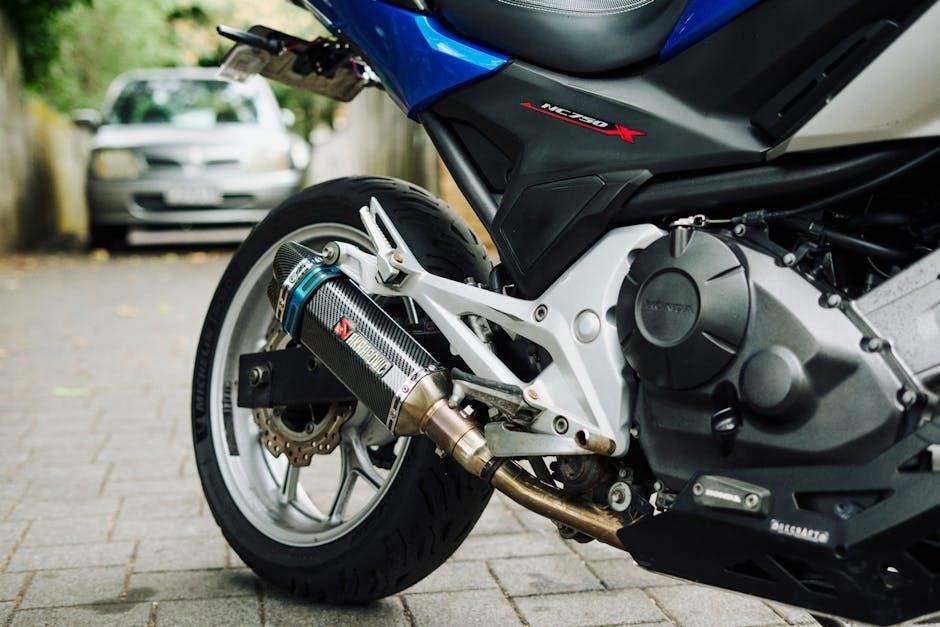The 2005 Honda Pilot Manual is your primary guide for understanding and maintaining your vehicle. It covers essential controls, features, maintenance, and troubleshooting to ensure optimal performance and safety.
1.1 Overview of the Manual
The 2005 Honda Pilot Manual is a comprehensive guide designed to help owners understand and maintain their vehicle. It includes detailed information about controls, features, maintenance schedules, and troubleshooting tips. The manual is divided into sections for easy navigation, covering everything from safety precautions to technical specifications. Reading it ensures optimal performance, safety, and longevity of the Honda Pilot.
1.2 Importance of the Manual for Honda Pilot Owners
The 2005 Honda Pilot Manual is essential for owners to ensure safe and proper vehicle operation. It provides critical information on maintenance, troubleshooting, and safety features, helping to prevent issues and enhance performance. Regularly referencing the manual promotes vehicle longevity and reliability, while also ensuring compliance with manufacturer recommendations for optimal driving experiences and long-term satisfaction.

Safety Features and Precautions
The 2005 Honda Pilot Manual emphasizes critical safety features like brakes and airbags, while outlining precautions to ensure safe driving and proper vehicle maintenance practices always.
2.1 General Safety Guidelines
The 2005 Honda Pilot Manual provides essential safety guidelines to ensure safe operation. It emphasizes proper seatbelt use, child restraint installation, and cautious driving practices. Additionally, it highlights the importance of regular maintenance to prevent mechanical failures, which could compromise safety. Adhering to these guidelines helps protect both occupants and other road users effectively.
2.2 Vehicle Safety Features
The 2005 Honda Pilot incorporates advanced safety features, including anti-lock braking systems (ABS) and multiple airbags for enhanced occupant protection. The vehicle is designed with a robust body structure to absorb and distribute collision forces. Additionally, electronic stability control and traction assist systems contribute to improved handling and reduced accident risks, ensuring a safer driving experience for all passengers.

Driving and Operating Tips
Mastering your 2005 Honda Pilot involves understanding its controls and following safe driving practices. The manual provides insights for optimal performance, fuel efficiency, and smooth handling on various terrains.
3.1 Understanding Controls and Instruments
Familiarizing yourself with the 2005 Honda Pilot’s controls and instruments is crucial for safe and efficient driving. The manual details each component, from the dashboard instruments to steering wheel functions, ensuring you understand their purposes and proper usage. This knowledge enhances your driving experience and helps maintain vehicle performance at its best.
3.2 Driving Techniques for Optimal Performance
Proper driving techniques enhance the 2005 Honda Pilot’s performance and efficiency. Smooth acceleration, steady steering, and maintaining proper tire pressure are key. Avoid aggressive maneuvers and ensure consistent speed on highways. Regular checks of fluid levels and filters also contribute to optimal performance. These practices not only improve fuel efficiency but also extend the vehicle’s lifespan and ensure a safer driving experience.

Maintenance and Service Schedule
Regular maintenance is crucial for the 2005 Honda Pilot. Follow the recommended schedule for oil changes, tire rotations, and fluid checks to ensure optimal performance and longevity.
Adhering to the service intervals helps prevent issues and keeps your vehicle running reliably.
4.1 Recommended Maintenance Schedule
The 2005 Honda Pilot manual outlines a detailed maintenance schedule to ensure optimal performance. Regular oil changes are recommended every 5,000 to 7,500 miles, depending on driving conditions. Tire rotations should occur every 6,000 to 8,000 miles to maintain even wear. Additionally, fluid checks, belt inspections, and air filter replacements are scheduled at specific intervals to prevent mechanical issues and extend the vehicle’s lifespan.
4.2 DIY Maintenance Tips
Performing routine maintenance on your 2005 Honda Pilot can be done at home with basic tools. Regularly check and top off fluids like oil, coolant, and windshield washer fluid. Replace the air filter every 15,000 to 30,000 miles to improve fuel efficiency. Inspect belts and hoses for cracks or wear, and replace them as needed. Refer to the manual for specific guidelines to ensure safety and effectiveness.

Technical Specifications of the 2005 Honda Pilot
The 2005 Honda Pilot is a mid-size SUV with a 3.5L V6 engine, 5-speed automatic transmission, and available all-wheel drive. It offers a fuel capacity of 19.2 gallons and seats up to 8 passengers. The manual provides detailed specs for engine performance, dimensions, and capacities to help owners understand their vehicle’s capabilities.
5.1 Engine and Transmission Details
The 2005 Honda Pilot features a powerful 3.5-liter V6 engine, delivering 255 horsepower at 5,700 rpm and 250 lb-ft of torque at 4,800 rpm. It is paired with a smooth 5-speed automatic transmission, offering both front-wheel drive and all-wheel drive options. This combination ensures excellent performance, fuel efficiency, and reliability, making the Pilot suitable for both city driving and off-road adventures. The manual details these specifications to help owners optimize their vehicle’s performance.
5.2 Dimensions and Capacities
The 2005 Honda Pilot measures 188.0 inches in length, 78.0 inches in width, and 70.0 inches in height. The wheelbase is 109.2 inches with a ground clearance of 7.9 inches. It has a 21.9-gallon fuel tank and seats up to eight passengers. These dimensions offer spacious comfort and practical cargo capacity, making the Pilot versatile for both daily commutes and family trips.

Troubleshooting Common Issues
The 2005 Honda Pilot manual helps identify and resolve common issues like brake problems, affecting nearly 88,000 models. It guides diagnostics and repair procedures for optimal functionality.
6.1 Diagnosing Common Problems
The 2005 Honda Pilot manual provides detailed steps to diagnose issues like brake problems. It includes checking error codes, inspecting components, and following diagnostic procedures. Use the manual to identify symptoms, locate the source of the issue, and ensure proper troubleshooting techniques. Regular checks and adherence to guidelines help prevent major repairs and maintain vehicle performance effectively.
6.2 Solutions for Frequently Encountered Issues
The manual provides practical solutions for common issues like brake problems and electrical malfunctions. It offers step-by-step repair guidance, emphasizing proper tools and techniques. Regular maintenance, such as oil changes and tire rotations, can prevent many issues. For complex problems, the manual advises consulting a professional or referring to detailed diagrams and instructions to ensure safety and effectiveness.

Owner Manual vs. Service Manual
The owner’s manual provides essential driving and maintenance tips, while the service manual offers in-depth repair procedures and technical specifications for professional or advanced users.
7.1 Differences Between the Two Manuals
The owner’s manual provides essential information for daily use, including controls, features, and basic maintenance, while the service manual offers detailed technical specifications, repair procedures, and diagnostic guidance for advanced users or professionals. The owner’s manual is designed for drivers, while the service manual caters to mechanics and enthusiasts needing in-depth repair and servicing details.
7.2 Which Manual Do You Need?
Choose the owner’s manual if you need guidance on daily operation, safety features, and basic maintenance. Opt for the service manual if you require detailed repair procedures, technical specifications, or advanced troubleshooting. Drivers benefit most from the owner’s manual, while mechanics or DIY enthusiasts may prefer the service manual for in-depth servicing and repairs. Both manuals ensure safe and proper vehicle usage.
Where to Find the 2005 Honda Pilot Manual
The 2005 Honda Pilot Manual can be found online through official Honda resources or downloaded from trusted automotive websites. Physical copies are available at authorized dealerships or retailers.
8.1 Online Resources and Downloads
Access the 2005 Honda Pilot manual through official Honda websites, trusted automotive forums, or platforms like ManualsLib. Download PDF versions for free or purchase digital copies from reliable sources. Ensure authenticity by verifying the publisher and checking for updates. Online resources offer convenience and instant access to essential information for maintenance and repairs.
8.2 Purchasing a Physical Copy
You can purchase a physical copy of the 2005 Honda Pilot manual from authorized Honda dealerships, online marketplaces like Amazon, or automotive stores. Ensure the manual is genuine and specifically designed for your vehicle. Prices vary, but expect to pay between $20 to $50. Consider shipping costs and condition if buying used. A physical copy offers durability and easy reference for DIY projects and repairs.
DIY Repair and Maintenance
The 2005 Honda Pilot Manual provides detailed guidance for DIY repairs and maintenance, empowering owners to perform routine tasks and minor fixes efficiently and safely.
9.1 Essential Tools and Equipment
For DIY repairs and maintenance on your 2005 Honda Pilot, essential tools include screwdrivers, wrenches, pliers, and a multimeter. A socket set, jack, and tire pressure gauge are also crucial. Specialized tools like an OBD-II scanner may be needed for diagnostics. Always refer to the manual for specific requirements and ensure safety by using proper equipment and protective gear like gloves.
9;2 Step-by-Step Repair Guidance
The 2005 Honda Pilot Manual provides detailed, step-by-step repair guidance, ensuring clarity and ease for DIY maintenance. From basic troubleshooting to complex fixes, the manual offers clear instructions, photos, and illustrations. It emphasizes safety and proper techniques, helping owners address issues confidently. Regular updates and recall notices are also included to keep your vehicle in optimal condition and ensure long-term reliability.
Updates and Recalls
Stay informed about software updates and recall notices for your 2005 Honda Pilot to ensure safety and optimal performance. Check official sources or the manual for details.
10.1 Checking for Software Updates
Regularly check for software updates for your 2005 Honda Pilot to ensure all systems are current. Updates can improve performance, fix issues, and enhance safety features. Use the manual or visit the Honda website for guidance on how to check and install updates. Always follow the manufacturer’s instructions to avoid errors.
10.2 Understanding Recall Notices
Recall notices are critical updates issued by Honda to address safety or performance issues in your 2005 Pilot. These notices outline necessary repairs or modifications to ensure compliance with safety standards. Always check the National Highway Traffic Safety Administration (NHTSA) website or Honda’s official portal for recall information specific to your vehicle. Addressing recalls promptly is essential for maintaining safety and vehicle integrity.
The 2005 Honda Pilot Manual is a vital resource for owners, ensuring safety, proper maintenance, and optimal performance while providing comprehensive guidance for troubleshooting and DIY repairs.
11.1 Summary of Key Points
The 2005 Honda Pilot Manual covers essential aspects of ownership, including safety features, maintenance schedules, and troubleshooting. It emphasizes understanding controls, optimal driving techniques, and DIY tips. The manual also highlights the importance of regular servicing and provides resources for updates and recalls, ensuring longevity and reliability of the vehicle for years to come.
11.2 Final Thoughts on Using the Manual
Using the 2005 Honda Pilot Manual is crucial for maximizing your vehicle’s performance and longevity. It empowers owners with essential knowledge, ensuring safety, proper maintenance, and troubleshooting. By following the manual, drivers can enjoy a smooth, reliable, and enjoyable driving experience. Treat it as a lifelong companion for your Honda Pilot, fostering confidence and expertise behind the wheel.
